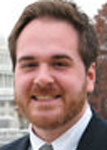As cases of highly virulent H5N1 avian influenza have recently resurged in Southeast Asia, scientists continue to warn that the next pandemic, based on all scientific data, is inevitable. In a new issue brief from the National Governors Association’s Center for Best Practices, states have developed strategies to protect state workforces and to ensure the continuation of services to the public during a pandemic event.
While mainstream media may have lost interest in the topic of pandemic preparedness, concerns over the threat of a devastating pandemic remain. In the recent assessment of state pandemic planning released by the US Department of Health and Human Services, all but three states planning efforts lagged behind in planning for the operations of state agencies during a pandemic, and protecting the state workforce. Additionally, in 2007 and 2008, the National Governors Association held a series of workshops with 55 states and territories, and the District of Columbia. Workforce planning and resiliency was consistently among the top concerns of pandemic planning officials.
Building workforce resiliency against a pandemic, or other catastrophic event, requires not just reinforcing public health concepts like social distancing, but also examining policies outside the public health community, from employee benefits to collective bargaining agreements, to ensure a basic continuity of government for citizens in a time of crisis. A fluid and adaptable workforce will have resiliency regardless of the incident—whether pandemic influenza or an act of terrorism.
Maintaining Essential Government Operations
Governors have engaged in mitigation strategies that buttress the workforce against a pandemic threat, care for state employees and their families, and protect the general public from a diminished quality of life. Some of these strategies include:
- Creating multiagency steering committees toentify those services that must be maintained during a pandemic and, in collaboration with public health agencies, develop statewide government workforce policies;
- Assessing the state workforce against those essential services to determine which personnel are essential, which personnel can be easily reassigned, and which departments, agencies, or offices could close during a pandemic emergency during the planning phase;
- Addressing worker shortages in essential areas by reassigning healthy employees, drawing on alternative worker pools—such as recently retired state employees and private temporary workers—and seeking volunteers from nonessential staff during the pandemic period;
- Stopping the spread of a pandemic in the workplace by providing adequate leave and incentives for ill employees to stay at home, promote social distancing measures and sanitary work environments, and allow for alternative work schedules—including telecommuting and flexible scheduling; and
- Exploring partnerships with labor unions and private sector partners to raise awareness of the threat and develop coordinated and consistent workforce strategies to avoid perceptions of unequal treatment.
As the state workforce provides the services that maintain society, a resilient workforce bolstered by smart policies will serve as the first line of defense against the debilitating effects of pandemic, guiding communities back from the brink by providing essential services and hastening a return to normalcy once the pandemic has subsided.
The NGA Center Issue Brief is available at: http://www.nga.org/Files/pdf/0902PANDEMICWORKFORCEPLAN.PDF

David G. Henry
David G. Henry is a homeland security and technology policy analyst with the National Governors Association Center for Best Practices. In this role, Mr. Henry provides technical assistance to governors' policy advisors and other state officials on public health preparedness, homeland security, emergency management and wireless interoperable communications. He previously served as a public health emergency planner for the Monroe County (IN) Health Department, and coordinator of the Monroe County Medical Reserve Corps. While in this position, Mr. Henry participated in a number of emergency preparedness and response efforts in southern Indiana. Mr. Henry is currently a member of the Fairfax County (VA) Medical Reserve Corps.
-
This author does not have any more posts.






